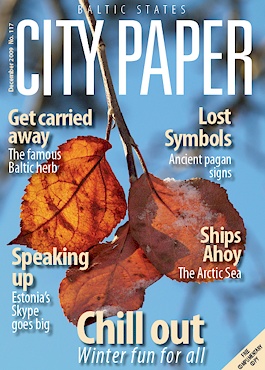Baltic Wedding Traditions
 A
white wedding dress to portray chastity, a pair of wedding rings to
symbolize eternal love and bonding,
a large wedding cake topped with a small
statue representing the couple, is all this
enough for a successful marriage and long lasting love? In the Baltic states, for a bride to put a piece of sugar in her bra
as a symbol of sweet love and to dance the first wedding waltz with
her groom, were the common traditions in medieval times. Nowadays we
have a big wedding cake instead of sugar and it doesn't make
marriage less honeyed. The first wedding waltz has changed to the
first "love dance", which also doesn't make this moment less
romantic and beautiful.
A
white wedding dress to portray chastity, a pair of wedding rings to
symbolize eternal love and bonding,
a large wedding cake topped with a small
statue representing the couple, is all this
enough for a successful marriage and long lasting love? In the Baltic states, for a bride to put a piece of sugar in her bra
as a symbol of sweet love and to dance the first wedding waltz with
her groom, were the common traditions in medieval times. Nowadays we
have a big wedding cake instead of sugar and it doesn't make
marriage less honeyed. The first wedding waltz has changed to the
first "love dance", which also doesn't make this moment less
romantic and beautiful.
Today's Baltic weddings are divided into different parts. First is the formal part – the church ceremony. The bride wears a white dress and a veil, the Groom is dressed in a tuxedo and the couple, in front of the God, vow to each other eternal love - forever and ever till death do us part.
The next part is the multi-traditional part, when the wedding organizers can show their creativity by compiling traditional wedding values with modern interpretations. However, this part can be different in all three Baltic countries.
In the country you can find new couples doing different farm works during the wedding - potato digging and pig feeding as well as planting family trees etc. Each activity has its own meaning and symbolism, but mainly it is a test of diligence.
The next step is to set a family 'budget-holder'. All that is needed is a coin squeezed into a pie. A couple has to divide the pie into two parts. The one who has the piece with the coin is going to be the 'family bank'.
If you happened to be at a wedding in Latvia, don't be surprised to see the groom carrying his bride over a bridge. Poor guy will have to do it six more times. Crossing the bridge symbolizes a conversion from status 'mine' and 'yours' to the status 'ours'.
Another widely known wedding tradition is passing the 'Three gates'. Each gate is a symbol of human growth: first is the childhood gate, second – the youth gate and the third is the 'husband and wife' gate. And as there are different activities to be done on each period of life, the new couple has to go through them, before they get to the weddings culmination, which is sometimes huge or sometimes just a small celebration party.
All family members, relatives and friends get together, have a delicious meal and various soft or strong drinks. The festivities can last up to three days. And during this time you won't see anybody with an empty glass. Of course, guests are getting tipsy and having lots of fun by playing games, dancing and participating in different wedding competitions, which pretty much is the main goal of the wedding fiesta.
After this goal is reached, guests should keep an eye on their personal things. It can happen that during the night some things can be 'stolen', for example, car keys or a wallet. So guests should be prepared the next day to ransom their stuff.
Moreover, even the bride can be stolen at the Baltic weddings by somebody who wasn't invited – some neighbors or acquaintances. In Latvia the thieves are called "ÄigÄni" ("Gypsies"). After the bride is stolen, the payment is demanded from the groom. It can be a bottle of champagne or a striptease.
At midnight there is a special ritual at Baltic weddings. It's a moment when the bride becomes a wife and the groom becomes a husband. In Latvia, when a newly married couple become a family, it is called "miÄoÅ¡ana". The main highlight of this adaptation is for the wife to put on a bonnet instead of the veil, to don an apron and to have a rolling-pin or a bowl with a wooden spoon. The new husband needs to put on a panama and light a pipe.
A lot of the wedding customs were derived from the times of our ancestors and a lot of them are inspired from other countries. For instance, the Russian tradition of putting a padlock on a bridge and throwing the key in the water, is a symbol of unbreakable love. This ritual has now become very popular among young couples. Another widely known tradition, which you will see nowadays at almost every wedding in the Baltics, is throwing the brides bouquet to the single women, whoever catches the bouquet will be the next to get married.
Each country has its own traditions - some of them are still strictly followed, to keep the marriage as strong as possible, some are already forgotten and some are mixed in with a modern twist, but make no mistake a Baltic wedding is an unforgettable event.
By Ilona Skorobogatova




